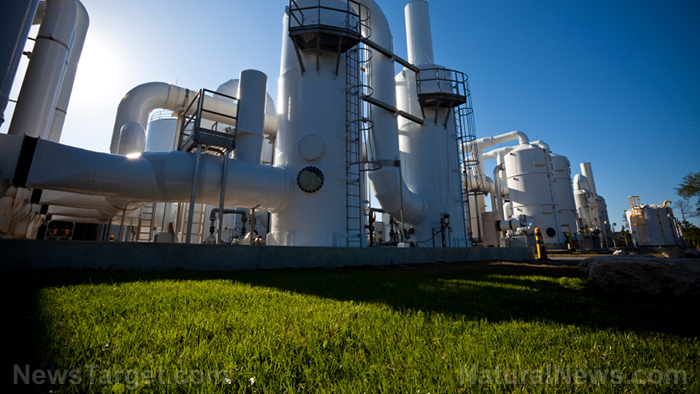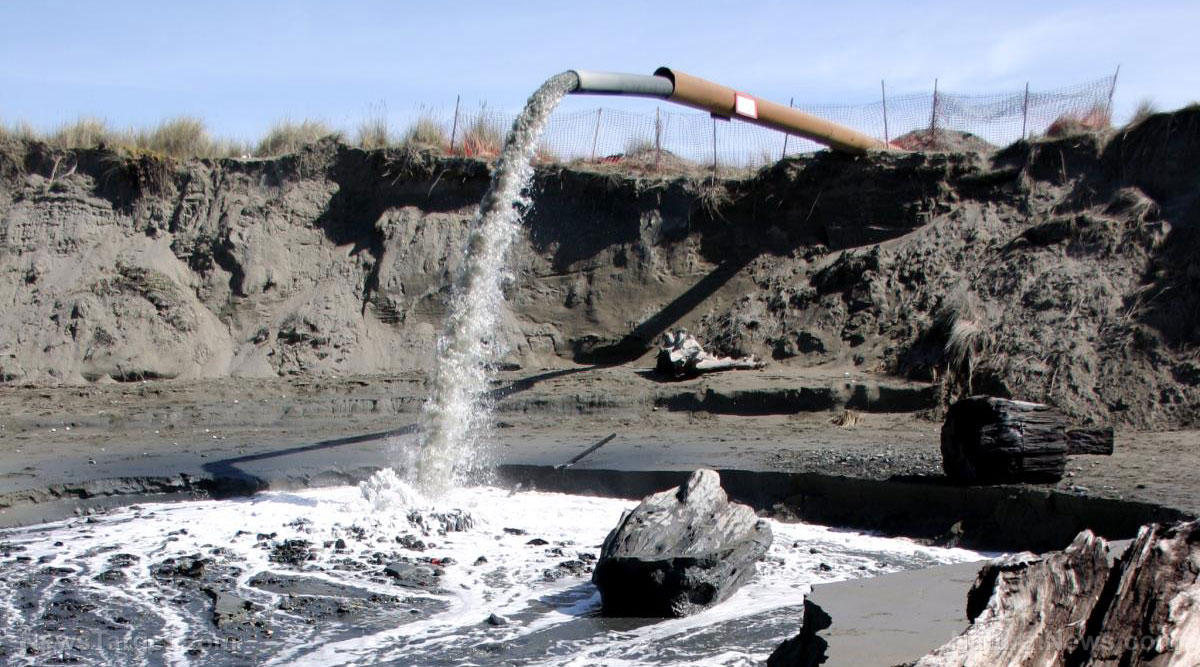Fracking companies are making HUGE money by crippling the environment with plastic
08/02/2018 / By Edsel Cook

Fracking companies are the real-life equivalent of super-villain Lootin’ Plunder from the old Captain Planet cartoons. An EcoWatch article described the fracking industry’s profitable business model, where they earn billions of dollars of profits by encouraging petrochemical companies to overproduce plastic products made from shale fuel.
Fuels extracted through hydraulic fracking processes are sold to customers like petrochemical companies that convert fossil fuel into various products. The current shale gas boom caused a big drop in the price of natural gas liquids, one of the key ingredients in the production of plastic resins.
Always on the lookout for profits, petrochemical companies began investing $186 billion in more than 300 new plastic production projects, reported The Guardian. Around half of these projects have been completed and are taking advantage of cheap shale gas to produce a tidal wave of plastic products.
U.K.-based Ineos is one such investor. Its chemical manufacturing operations span 22 different countries and its 75 facilities generate mounds of plastic products, tons of air pollution, and industrial accidents aplenty.
In 2008, a severe chemical fire ravaged Ineos’ German holdings. Its Grangemouth facilities are considered to be Scotland’s biggest source of carbon dioxide pollution as of 2016.
As if unsatisfied with the pollution it generates in the Old World, Ineos also buys liquid gas extracted from the underground shale formations in Pennsylvania and Ohio. The volatile fuels are pumped aboard a growing number of “dragon ships” and hauled across the Atlantic for use by European chemical plants.
Because its newly built dragon ships make it cheap and easy to ship shale gas overseas, Ineos is eager to expand its lucrative transactions with U.S.-based fracking companies. Its bottomless thirst and funding will ensure the need for new oil pipelines like the recently completed Dakota Access Pipeline and the Mariner East 2 line currently being built in Pennsylvania.
Not even state governments can stop the Mariner East pipeline
The aforementioned pipelines are run by Energy Transfer Partners subsidiary company Sunoco. The Dakota line drew international protest for the dangers it posed to the environment while the Mariner East line overran private property through liberal use of eminent domain. The latter is opposed by affected locals who don’t want the oil pipes on their expropriated land or near their communities.
Like Ineos, Sunoco has a terrible history of operational safety. The company is known to have suffered more oil spill incidents than its rivals since 2010.
Its Mariner East pipeline project is no exception. Sunoco proceeded to suffer numerous accidents and drilling spills during construction. Its operations also contaminated local water supplies for several communities.
Confronted by the company’s “egregious and willful violations” of state environmental laws, Pennsylvania’s Department of Environmental Protection shut down construction of the Mariner East line earlier this year.
However, the state environmental regulation body reversed its decision on February 8. Sunoco paid $12.6 million in exchange for permission to resume the massive project.
The Mariner East project would never have gotten off the ground, much less gotten this far, if pro-fracking politicians hadn’t lent a hand by ramrodding it through the regulatory process in the first place. (Related: Scientists altered data proving fracking causes earthquakes.)
The combination of fracking wells ravaging Pennsylvanian soil, leaky pipelines running throughout the U.S., and air pollution and plastic trash from Europe-based petrochemical companies are part and parcel of a deleterious business model that benefits big business at the cost of the people and the planet.
Stopping this cycle will require cooperation between state authorities in the U.S. and European political leaders who can rein in the excesses of fracking companies and plastic manufacturers on both sides of the Atlantic.
Uncover the greedy ploys of the fracking industry at FrackingWatch.com.
Sources include:
Tagged Under: environment, fracking, fracking industry, fuel, Hydraulic fracturing, petrochemical companies, Plastic, shale gas, toxic chemicals, toxic substances



















